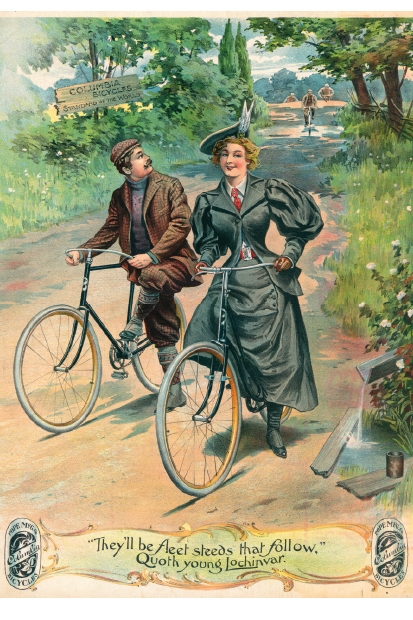Bicycles — in Britain, anyway — are the Marmite means of transport. I am among the bicycle-lovers, almost religious and certainly addicted in my need to have a daily bike ride. But I can see why people — and drivers in particular — hate some of us: for our smugness, our need to keep on moving through red lights and along pavements. It isn’t like this in Holland, where bicycling is so embedded in daily life that most drivers are bicyclists and vice versa; where mutual understanding leads to mutual respect.
Why do bicycles have this effect? Of intense affection among some, hatred among others; of mass use in some countries, limited use in others? Paul Smethurst could have answered the question. And his book does have some juicy little statistics in it. But I’m afraid it’s so mired in stodgy academese that it’s a deep disappointment.
It touches on some good points, not least class and bicycling. As former third- world countries advance, they cast aside their bikes, considered a sign of poverty. They particularly cast aside old-fashioned sit-up-and-beg bikes, now extremely fashionable among the British bicycling middle classes.
In time, though, China and India are bound to embrace the bike once again. There’s a natural life cycle — if you’ll forgive the pun — to the bicycle. Poor countries exchange them for cars when they get richer. When the roads clog up, they return to the bike, the magical object that sails serenely past traffic jams. Already, Chinese cities are starting to introduce pollution-reducing mass transit systems with integrated bike-share schemes.
In his workmanlike early history of the bike, Smethurst reveals how little the bicycle has changed since John Kemp Starley’s great Rover safety bicycle of 1886. There were lightweight racing bikes in the 1930s, touring bikes in the 1950s, small-wheeled commuting bikes in the 1960s, BMXes in the 1970s and mountain bikes in the 1980s. But they all derive pretty directly from the diamond-framed, two-wheeled, chain-driven Rover.
On the journey to the perfection of the Rover, there were several earlier diversions. In 1817, the wooden hobby horse came along. This cumbersome thing — which you propelled by putting your feet on the ground — was eclipsed in 1866 by Pierre Lallement’s velocipede. The velocipede — and its successor, the penny-farthing of 1869 — were hindered by the inefficient technique of pedalling the wheel directly, with the pedals connected to the wheel hub.
And then something magic happened in Coventry in 1885 — with the invention of Starley’s Rover. Starley himself said the bike had been designed as a prosthetic appendage to enhance the capabilities of the human form. The best bike design unites the human frame with the slimmest of bicycle frames, producing the most efficient use of energy.
This explains the sheer joy of the bicycle for us obsessives. When you’re whizzing along — particularly downhill — the bike is a fifth limb you barely notice, propelling you along at 30 m.p.h. with minimal effort. There’s no need for outside energy. You and your bike are a self-supporting organism; in perpetual motion, too, if you ignore red lights.
The bike is the gift that goes on giving: in endorphins, in the weight you work off. As Smethurst points out, no other form of transport offers such natural, unenclosed contact with the outside world. And the pace of the bike is perfect: quick enough to cover plenty of landscape, slow enough to appreciate it.
Smethurst is clearly a fellow bike nut, but he has no gift for communicating the pleasure of the bike. He has fallen prey to the academic’s dreary alchemy: turning joy into over-Latinate, over-analysed gobbledegook. Here he is, failing to explain the simple beauty of the bike in a modern, complex, digital world:
Today’s hyper-technical fetishism for the nuts and bolts of things would then represent a reification of machines like the bicycle in a ‘post-machine’ age.
Nope. Me neither.
When he steers clear of the thesaurus, Smethurst does track down some interesting research. A study of early-20th-century courtship mobility in rural Dorset revealed an increase in working-class marriages across parish boundaries, thanks to the bicycle — which grew commonly available between the first and second world wars. And he’s diverting on how bicycle manufacture has remained buoyant even as the working classes of rural Dorset and China have swapped their bikes for cars. As mass third-world commuter bicycling has declined, leisure bicycling across the world has filled the gap.
There are now thought to be a billion bikes on the planet, and the number is increasing by 100 million a year. However futuristic other modes of transport may get, we will always have the bike.
Who would want a riderless bicycle, say? Who can improve on perfection?
Available from the Spectator Bookshop, £18.99 Tel: 08430 600033






Comments